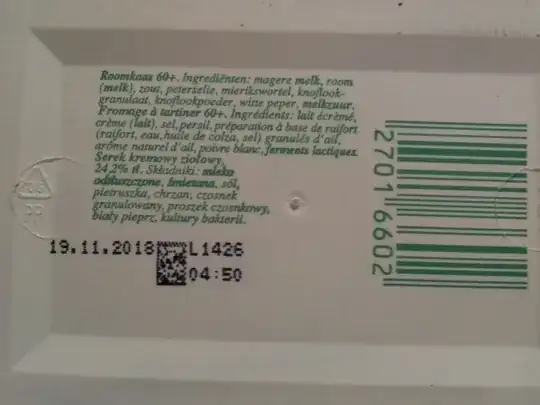I have a Polish spread cheese that is also marketed for Dutch and French markets and thus has descriptions in three languages. Polish and French or Dutch names differs by number used in it.
Polish name's equivalent to English is "spread cheese 24.2% of fat". French and Dutch names are equivalent to English "cream cheese 60+".
What that "60+" stands for, what does it mean and how does it correlate to 24.2% of fat.
EDIT: Here are the photos of a cheese in question, box containing it photographed from both sides:
Dietary table (placed on back, not photographed) says that it contains exactly 23.5 grams of fat per each 100 grams of the product. Thus this cheese, by no mean, can contain 60% of fat and this number must stand for something else.
As you can see, to make things even more complicated there's a "V.G./M.G.: 70%" notice on the front (haven't noticed it before). So this gives us three numbers:
- 23.5 grams / 24.7% of fat,
- 60+,
- V.G./M.G.: 70%.
Last two are unknown to me.

